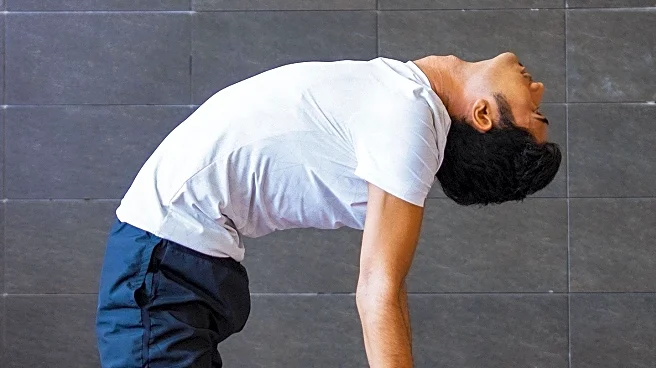What is the story about?
What's Happening?
A recent study published in Advances in Integrative Medicine has challenged the common perception that yoga is highly effective in improving vascular health. The research systematically reviewed existing literature, including various trials, to compare the impact of yoga and other exercise interventions on vascular function in sedentary adults. Vascular function, crucial for cardiovascular health, refers to the ability of blood vessels to transport blood efficiently. The study found that traditional exercises like Tai Chi, Pilates, and high-intensity interval training consistently outperform yoga in enhancing vascular function. Dr. Leena David, a co-author of the study, emphasized that while yoga offers some benefits, structured exercise is more reliable in maintaining the flexibility of blood vessels, which is vital for preventing heart attacks and strokes. The findings are significant for the millions practicing yoga worldwide and those affected by cardiovascular disease.
Why It's Important?
The study's findings have implications for public health recommendations, particularly for the 620 million individuals affected by cardiovascular disease globally. While yoga remains culturally significant and accessible, the research suggests that those seeking consistent cardiovascular benefits may need to incorporate more vigorous forms of exercise into their routines. This could influence healthcare providers to recommend a mix of exercise types for better vascular health. The study also highlights the importance of movement in counteracting the negative effects of sedentary behavior, which is likened to the risks associated with smoking. The fitness and digital health industries might leverage these insights to develop structured exercise programs and technology-driven solutions for sedentary populations.
What's Next?
The researchers advocate for a nuanced approach to physical activity in public health messaging, suggesting that a combination of yoga and more intense exercises could make heart health more accessible. Healthcare providers may begin to recommend exercise not only for weight management but also as a strategy for improving vascular health. Public health campaigns could emphasize the importance of movement as medicine, encouraging a mix of exercise and yoga to protect cardiovascular health. The study's insights could lead to the development of new exercise programs and technologies aimed at improving vascular function among sedentary individuals.
Beyond the Headlines
The study underscores the cultural significance of yoga and its potential as an inclusive health intervention. However, it also points to the need for a balanced approach to physical activity, considering the type, intensity, and consistency of exercise as key determinants of vascular health. The findings may prompt a reevaluation of how yoga is marketed and integrated into fitness regimes, particularly for younger adults who may not experience the same benefits as older individuals.
AI Generated Content
Do you find this article useful?










